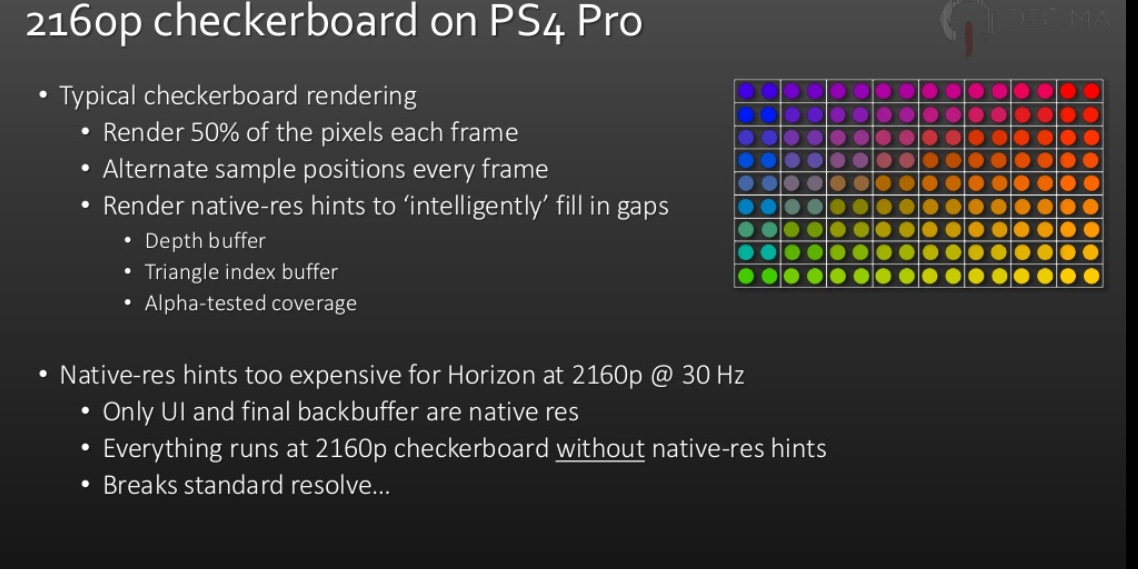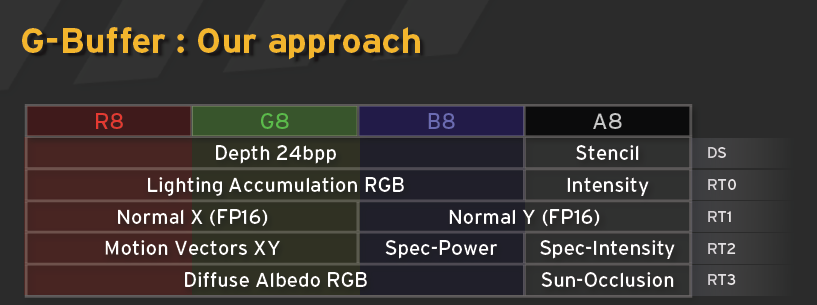Silent_Buddha
Legend
I think the general consensus is the lack of bandwidth and ram relative to the compute increase. Ps4 pro is a good 1080p console. Xbox X is a good 4k console.
That combined with a reliance on the ID buffer to attain higher resolution with CB. Except almost noone wants to use the ID buffer (as implemented on the PS4) for CB because it was a pain to implement and there are better methods of reconstruction that developers prefer to use. Basically the ID buffer was trying to make up for shortcomings in the hardware, but it was too difficult to use with too little upside for the time investment. Especially when it came to multiplatform developers.
Regards,
SB



